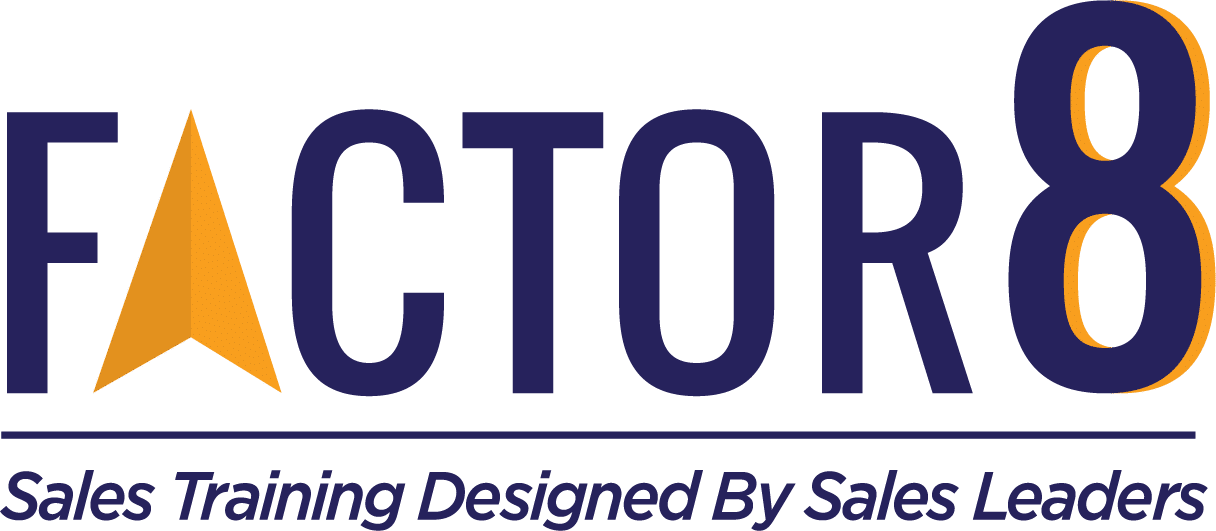Prospecting
Fall in Love With Prospecting: 5 Tips to Make Filling the Pipeline Suck Less [Webinar Recording]
Fall in Love With Prospecting:
5 Tips to Make Filling the Pipeline Suck Less
[Video Recording]

How to Overcome Brush-Offs (and Get Prospects Talking)
Let’s face it, every seller has been brushed off (and probably quite often).
“I’m not interested.”
“We’re all set.”
“I don’t have time right now.”
Sound familiar? If you’re making outbound sales calls, cold or warm, you’ve heard these before. But here’s the good news: Brush-offs are not objections. And when you know how to handle them, you can double your talk time, increase your conversion rates, and book more meetings.
I’ve broken down my 6 tips and tactics to help you beat the brush-off and turn dismissals into meaningful conversations. Let’s dive in!
Brush-Offs Are NOT Objections
Objections happen late in the sales cycle after you’ve made your pitch and the buyer has concerns, usually about price, timing, or fit. Brush-offs? They happen early, and they’re not objections at all.
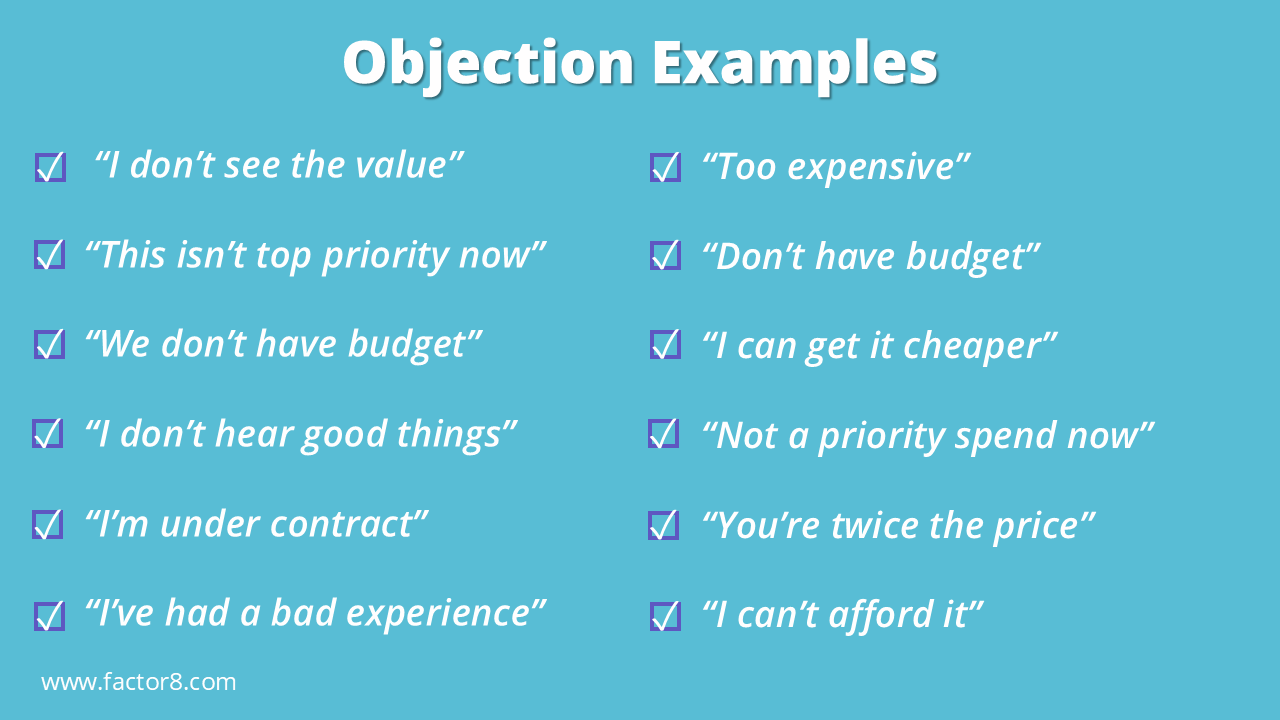
Think of a brush-off like an automatic reflex. It’s the prospect’s way of saying, “I don’t have time for a sales pitch right now.” That’s all it is. And it doesn’t mean they aren’t a good fit or won’t buy from you later. It just means they don’t know you… yet.
So, what’s your job? Keep the conversation going, show them you’re different, and provide value ASAP.
READ: How to Keep Prospects on the Phone
Brush-Offs Are Uninformed (That’s Good News!)
Prospects brush you off because they don’t know who you are or what you’re selling. That’s great news! It means they haven’t actually rejected you, they just haven’t heard your value yet.
This is why you should never “kill” a lead based on a brush-off. Too many sellers give up too quickly, assuming the lead is a dead end. In reality, the prospect just isn’t paying attention.
Here’s why you shouldn’t take brush-offs personally:
- They’re often automatic responses, not actual decisions
- The prospect is likely multitasking or distracted
- They don’t remember you yet (if you call back, you get another chance)
Your instinct might be to respond to the brush-off directly (“Oh, but we can save you 20%!”). DON’T DO THAT. That just gets you lumped in with every other pushy salesperson. Instead, sidestep it. Keep the conversation going by staying confident and trying again.
- If it’s a high-value lead, try them at least 10 times before moving on. They won’t even remember they brushed you off the first time.
- Call back quickly. If someone brushes you off today, try them again tomorrow. They probably won’t remember the first attempt, and this time, they may actually listen.
- Don’t answer the brush-off directly. Beat it instead. Instead of reacting to “I’m not interested,” keep control of the conversation and guide it where you want it to go.
By understanding that brush-offs are uninformed and automatic, you can push past them and start real conversations.
The REAL “Objection” Behind the Brush-Off
When someone brushes you off, what are they really saying?
- I’m busy.
- I don’t like sales calls.
- I don’t know who you are yet.
- I assume you’re like every other seller who’s going to pitch me something useless.
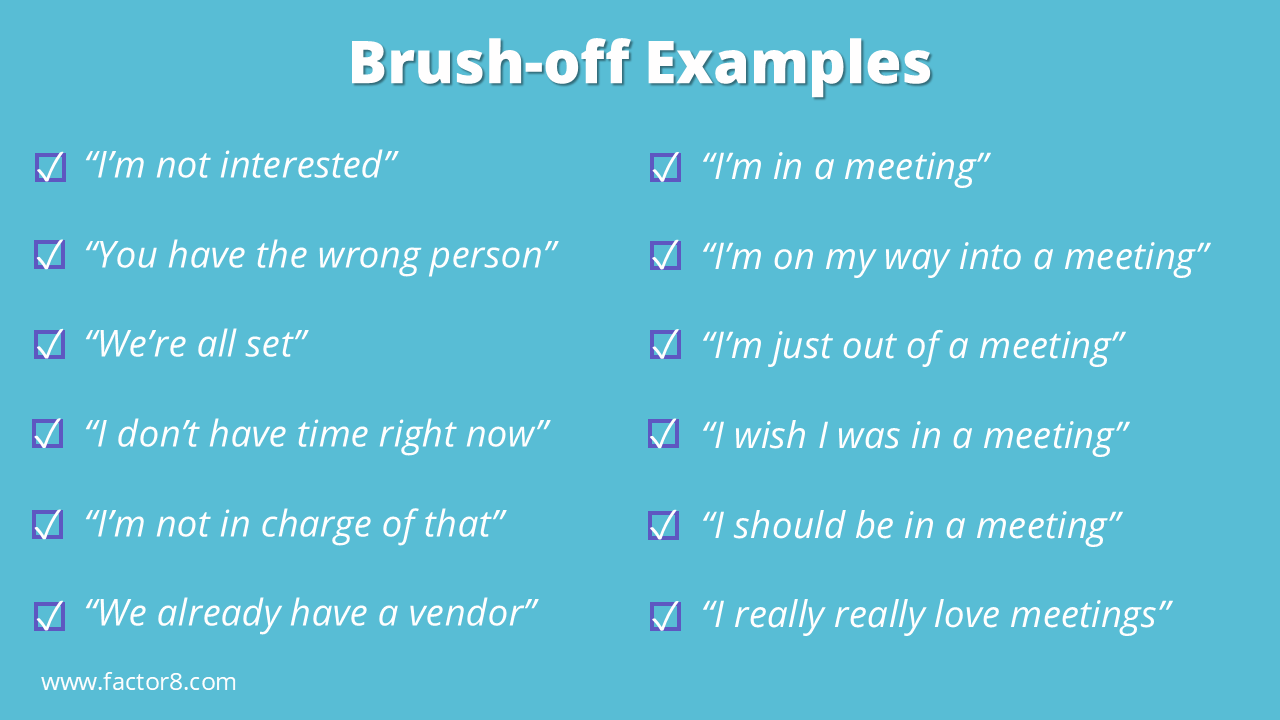
The key to overcoming a brush-off is understanding what’s underneath it. Most brush-offs aren’t real objections, they’re reactions to an interruption. Your prospect isn’t rejecting your solution; they’re rejecting the idea of being sold to in that moment. Your job is to shift their perception of you.
Here’s how to uncover the real meaning behind their response:
- Listen for patterns. Is their response rushed? Dismissive? A sign they don’t trust salespeople? Recognizing their tone helps you respond appropriately.
- Acknowledge and reframe. Instead of pushing back, show you understand: “I hear you. Sounds like you’ve got a lot going on right now.” This lowers their defenses.
- Use curiosity to break through. Ask a question that shifts their attention, like: “Would you say Q4 is your busiest quarter?” or “Out of curiosity, is this something you handle directly, or does someone else manage it?” When they engage, they’re opening the door for a real conversation.
The goal isn’t to argue with their brush-off, it’s to help them rethink it.
WATCH: How To Overcome Brush-Offs On Sales Calls
Get Them Talking (It’s Like Buying a Drink!)
If you’ve ever bought someone a drink at a bar, you know the goal isn’t to “close the deal” in 30 seconds. It’s to start a conversation. The same applies here.
When a prospect gives you a brush-off, they aren’t thinking deeply about your offer, they’re reacting instinctively. Your job is to interrupt that instinctive response and guide them into an actual conversation.
The best way to do that? Use the CCO Framework (Closed, Closed, Open) to break through their initial resistance. Start with simple, closed questions to get them talking, like “Is this a crazy time of year for you?” or “Would you say Q4 is typically your busiest quarter?” Once they’re engaged, move to an open question that invites more thought, like “Is this for a short sales cycle, or do deals take months to close?” By following this structure, you can take control of the conversation and steer it toward a meaningful discussion.
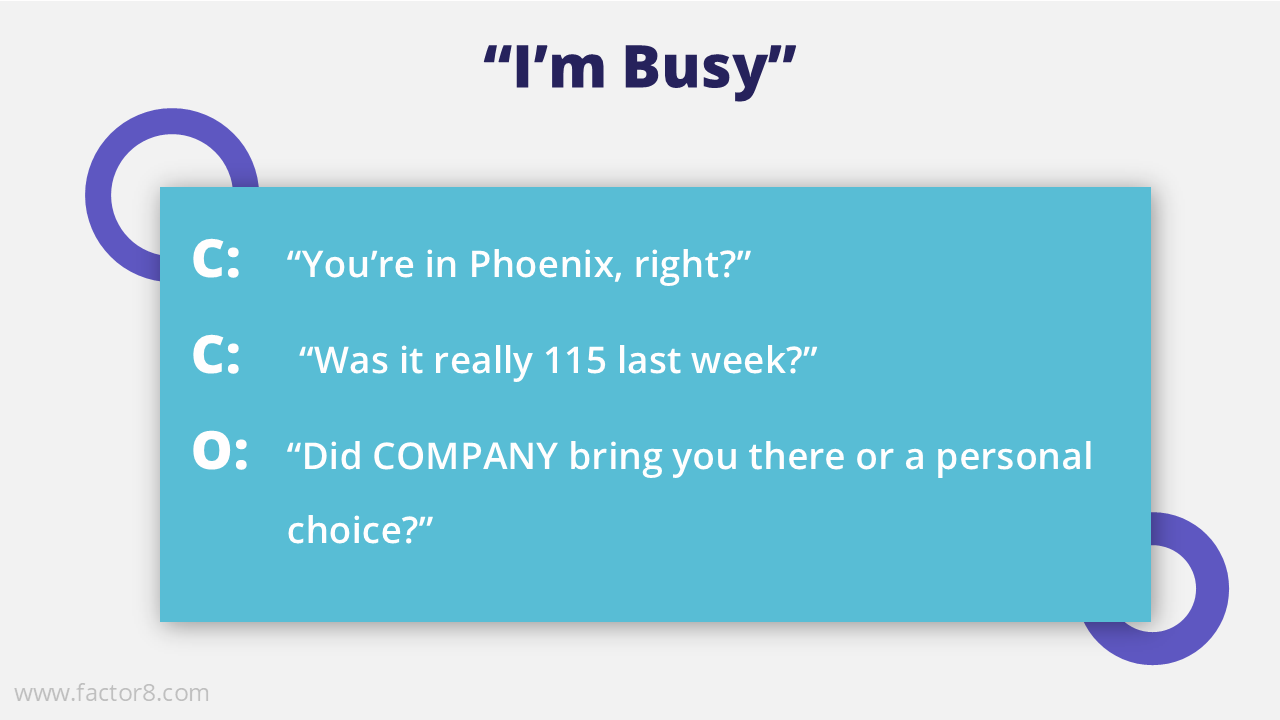
As a reminder, a brush-off is different from an objection. An objection is a real, considered response to your pitch, something they’ve thought about and have a concern over, like pricing, timing, or relevance. A brush-off, on the other hand, is a knee-jerk reaction designed to end the conversation before it even starts. Your job isn’t to overcome an objection here, it’s to keep them talking long enough to break their automatic dismissal.
DOWNLOAD: 4-Step Process to Overcome Objections
Shaking up the conversation with a pattern interrupt gets them to stop and engage. Small talk about something unexpected (like their location, the weather, or a recent event) can lower their defenses and make them more receptive. People also love talking about themselves, so guiding them toward a topic related to their role or priorities can naturally steer the conversation toward business without feeling forced.
Breaking Through Brush-Offs
Once you start recognizing brush-offs for what they really are—automatic, uninformed reactions—you’ll realize they’re not personal and they’re not final. The key to overcoming them is choosing the right approach. You can take the direct path by breaking the ice with the CCO Framework (Closed, Closed, Open), easing your way into the conversation until the prospect naturally engages. Or you can sidestep the brush-off completely by shifting the conversation to something unexpected, like their location, the weather, or a relatable topic, disrupting their auto-response and creating an opening for dialogue.
Either way, the goal is to bypass their defenses and turn a brush-off into a real sales conversation. Try it out, test both methods, and see what works best.
Subscribe to our email list to receive new content, webinar invites, and training offers.
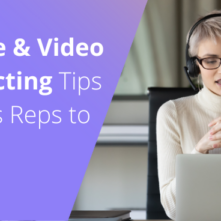
7 Phone & Video Prospecting Tips for Sales Reps to Crush It
Plenty of sales reps love the convenience of email and LinkedIn prospecting. But poorly crafted, AI-generated messages do little to build rapport and trust with your prospects.
That’s why, as much as some people despise it, you have to pick up the phone.
As young reps continue to phase into the sales force, there is a growing challenge for them to get beyond the keyboard. And while the pandemic certainly didn’t help matters, fostering those face-to-face (or voice-to-voice) connections has become more critical than ever.
Suffice it to say that salespeople can’t afford to rest on their laurels. We have to fight harder to build pipeline, persuade prospects, and win deals.
That means moving from behind the keyboard, picking up the phone, and utilizing videos in prospecting.
If you’re ready to crush it, here are seven tips that can help our reps make the most of phone and video in their prospecting efforts.
1. Don’t rely on email alone
It’s important to connect with people on social and email, certainly. But think about it: when’s the last time you bought something over email?
Never mind that people are wary of scammers and phishing attempts. No one buys from text on a screen.
People buy from other people. More importantly, they buy from people they trust.
That doesn’t mean you shouldn’t use email. But there are ways to make email more engaging and personal.
For example, emails that use video get a 96% higher click-through rate than those that don’t. It makes sense: video shows off your face, which helps to foster that personal connection.
So if you’re relying on a “spray and pray” approach to email where you’re sending as many as you can hoping for something to stick, just stop. You’ve got way more tools at your disposal.
2. Make your videos watchable
Just getting started using video in your prospecting efforts is a great first step. But if you really want to maximize your chance of success, then you need to make your videos as watchable as possible.
Most people drop off of videos 70-80% of the way through. So it’s important to structure your video so you get their attention and deliver necessary value as quickly and efficiently as possible—before they click away.
Here are some tips to make your videos more watchable:
- Start with empathy. Show the prospect that you truly understand the problem they’re facing.
-
- Lead with value. Catch the prospect’s attention by offering something to help with that problem as early in the video as possible.
- Use a list to structure your video. “3 things before our call tomorrow,” or “4 things I noticed on your website.” That will help make the video more scannable and increase the prospect’s likelihood of retaining that information
- Caption your video. Adding captions to videos can increase the watch rate by up to 80 percent. Captions also help with scannability.
- Put your call-to-action in the middle. It logically makes sense to throw the CTA at the end. But by that point, most people have dropped off. Put it in the middle to increase the likelihood that people will actually see it.
3. Use the prospect’s name off the bat
The first few seconds of a video are key to getting your relationship with the prospect off on the right foot. One great way to do this: use the prospect’s name.
This goes back as far as Dale Carnegie: people perk up when they hear their own name. When you use their name, you set the tone of the relationship as a familiar one, which increases their likelihood to trust you.
What’s more, when you use a prospect’s name in a video, it’s proof that you aren’t batch-sending messages. You’re taking the time to record a personalized message, which shows that you’re putting effort into building that connection.
WATCH: 10 Tips for Building Human-to-Human Connections on Sales Calls
4. Don’t just call prospects once
It’s no surprise that phone calls used in tandem with email help to increase the likelihood of a response.
The problem, however, is that only 10% of sales reps make more than three attempts to reach a prospect. Calling more than three times may seem like a lot, when you consider that it takes anywhere from seven to fourteen touches to get a conversation with a prospect, then frequent follow-up is key to making that conversion.
Also remember that while email and social media are powerful tools, they have one purpose: to get you on a call with the prospect. That’s the only way you’ll be able to sell them.
5. Don’t waste time following up if your data is incorrect
Spray and pray is popular because it’s quick and easy. Even if half the data is incorrect, you’re spending so little time on each prospect that it nets out positive.
But when you’re taking the time to follow up multiple times, record videos, and build relationships with prospects, investing in the wrong people can be a significant time sink.
That’s why it’s important to do your homework. One tip we recommend at Factor 8 is if you get a voicemail, hit the 0 button to find the directory or talk to someone else in the company.
What I tell people is: try to be James Bond for about 10 dials. You’re going to learn something critical that will help you find the right person or provide you with important information that you can then use to land the deal:
- Who reports to who?
- What system do they have?
- How long has your decision maker worked there?
- Are there any current projects that are a priority?
- How many employers/locations are there?
- Other key influencers that you should include in the process?
Use your personality, talk to people, and get some critical account information that can help you become more successful as you build your relationship with them over time.
READ MORE: How to Use Sales Intelligence to Boost Profits
6. Qualify, qualify, qualify
First of all: sales qualification is not the same as lead qualification. The latter is a marketing indication that a prospect may be ready to buy due to their engagement. Sales qualification is about how much money you can make with a particular account—what’s the potential that they’ll buy from you?
There are a number of factors that go into play here:
- Size of sales team—more reps means more revenue
- Is the company B2B or B2C?
- What tools or platforms does the company already have (especially important if you sell SaaS)?
- Do salespeople have to acquire their own tools or does the company provide them?
One great tip for this: don’t blow past the gatekeepers! In your haste to get to the decision maker, you may end up missing the opportunity to gain some vital information on the company that can help you tailor your video and phone communications.
READ MORE: How to Build an Account and Lead Qualification Strategy
7. You were hired for your personality—use it
If marketing could source leads and close deals on their own, we wouldn’t need sales.
The reason you have a job is because salespeople can do something marketers just can’t. You weren’t hired to send canned messages. Marketing can do that more efficiently than you.
Salespeople are there because personality makes a huge difference in how prospects feel about potential vendors. For many businesses, it’s the people that are the differentiator between themselves and their closest competitors.
So let people get to know you. You’ve been hired to be a personality. Use it!
If your sales team struggles to use phone and video effectively, Factor 8 can provide the training and resources needed to get everyone up to speed. Learn more about our training and coaching services here.
Subscribe to our email list to receive new content, webinar invites, and training offers.

How to Keep Prospects on the Phone
Everyone loves to talk about how many calls it takes to get someone on the phone (me included), but not enough of us talk about how to KEEP them on the phone!
If you’re making cold calls or even cold-ish calls, and you FINALLY get someone to answer, you feel a bit like…

Now, don’t blow it. The number one mistake at this stage is to begin a full-on sales vomit.
We give the elevator pitch,
We give the value prop,
We ask a question,
Then we answer the question for them…
All the while we’re still actually tuning in to the fact we are getting a chance to do our jobs and someone is on live with us. And as soon as our brains catch up with our mouths, the prospect is saying:
“This isn’t a good time.” or “I’m not actually in the market right now.”
We call this an “Early Dismissal” as opposed to an objection (where they have a relevant reason or question based on our actual offering). You might call it, “getting blown off, rejected, turned down, shut down”, or “blown out” if you’re a friend from the UK.
So what do you do when you’re getting shut down in the first 30 seconds of the call? We got you.
#1 Stop Talking Sooner.
The best way to stop the sales word vomit is to never start it. Get a SWIIFT℠ intro down pat. This is a 10-second intro that is designed to get prospects talking FAST.
#2 Save the Value Prop for Minute Two.
Lots of folks think their elevator speech (what I do and why you care) is the same as their intro and that’s exactly wrong. Save this for when they say, “Wait, who are you with again?” Now they’re listening! Another smart reason to save it: Your intro should be as much about them as possible and as little about you as possible. This way we don’t sound like desperate salespeople.
Desperate salespeople consistently get shut down with early dismissals.
#3 Be Confident and Conversational.
If you sound like their neighbor or like they’re lucky to even be talking to you, you’ll have more luck keeping them on! Again, the key to this is a go-to introduction and practice. Yes, write it down if you need to for the first few calls. Then ditch it because reading it sounds neither conversational nor confident!
#4 Master the Brush-Off!
We teach 2 ways to overcome the dismissal and neither is anywhere close to how we overcome an objection. When we overcome objections, we dig into the why and address concerns. An early dismissal is not based on fact. It’s another way to say:
“Leave me alone, I’m busy.”
“I don’t like salespeople.”
“I can’t deal right now.”
So don’t dig in, drive around! The key to keeping prospects on the phone is to get them talking! Do this by bringing up a random subject or even digging into their BS excuse with a question.
For example:
Dismissal: “I’m not the right person.”
Rep: “So how are things going over there?” (unrelated question), or
Rep: “So there are more folks in your department?”
The key is to not stop! Now ask another question. And another. And before you know it, you’re getting the information out of them you called to get!
Second key: Prevent sounding defensive at all costs! Here’s an example of what sometimes happens that doesn’t work:
Dismissal: “I’m not the right person.”
Rep: “So, you aren’t interested in saving money?”
Prospect: “No you little turd and now I will never buy from you ever.”
Get the difference? I’m not saying to strong-arm, I’m telling you to deaf ear. Keep it sweet and light and go right on past them with another question and before they even realize it, you’ve gotten two qualifying questions answered and the name of the right person to call (or a better time to call them).
It doesn’t work every time, but we see a good 70% plus success rate!
Subscribe to our email list to receive new content, webinar invites, and training offers.
Craft Your SWIIFT℠ Sales Call Intro Script [Cheat Sheets]
Craft Your SWIIFT℠ Sales Call Intro Script
[Cheat Sheets]

4 Steps to Asking Better Sales Discovery Call Questions
Prospecting discovery is drastically different from pipeline discovery. If you’re selling something new and you’re leading with the standard exploratory questions that everyone else already Googled, you’re probably not getting through #5 on your list of top ten questions. Stop getting shut down on your BDR, SDR, AE, ISR, Acquisition (really, any new prospect) calls!
The key is to stop focusing on the benefits of your solution and start thinking about what motivates human beings. Because nobody likes change for change’s sake. We NEED motivation!
READ: 5 Questions You Should Never Ask on a Sales Discovery Call
If my cell phone provider called me right now with a better plan or phone that cost nothing more, I wouldn’t change. Why? Because changing phones or plans is a thorn in my side. Changing your grocery store sucks, new apps frustrate me, even changing lanes is a hassle. How often do you change the route you drive for fun? Bought Toyota for decades? On your third Labradoodle? Human beings resist change. It’s a fact.
Just because you have something awesome, it doesn’t mean I’ll lift a finger to get it. That includes listening to you, learning more, attending a demo, or giving you five more minutes.
So what will motivate someone not expecting your call to consider giving you their most precious resource (time) to learn about something they haven’t thought once about in the past month?
PAIN motivates change.
Only, not the pain everyone else is talking about. Discomfort or dissatisfaction is just one of four ways to get the meeting. And it isn’t the most successful. Let’s dig in.
- Problem: they have a challenge you can solve (normal pain)
- Avoiding disaster: there’s a challenge coming and you can prevent it (top motivator)
- Improve life: Your solution makes their life easier, better, or gives that appearance
- Newness: It’s all about the FOMO with these folks
Let’s take a look at each for a moment. Join me in thinking about PAIN in a whole new way!
Problem: We all have business challenges and goals, but we don’t start actively looking for solutions until it really hurts or someone has given us a deadline. Sure, I could save on electricity costs with an AC tune-up, but it doesn’t HURT until the unit is broken, I get an outrageous bill, or my spouse tells me to get it fixed or sleep outside. So, the seller’s job when it comes to a problem is to:
- Make it hurt more
- Sell the relief
- Push a deadline
- Show pending disaster (check out A: Avoiding disaster)
We do this with smart discovery questions about costs, timelines, potential disasters, and a better life on the other side. Find the root and push on it a bit. For example, if I spend $200 / month on electricity and a new unit could save me 10%, I’m not terribly motivated by a mythical $20. But if you find out my highest bill, and make it an annual number, I am wasting over $600 a year! Maybe I’d love to not worry about cranking it down a few extra degrees this summer and not spending a dime more. What if my unit is already twelve years old and the average only lasts ten? What happens to my pets, my kids, my candles, and my marriage when we spend a week without AC in July? Find the right path and venture down it one question at a time.
Avoiding Disaster: Penalties, losses, or threats are widely cited as human beings’ biggest motivator. (Really, the threat of losing $1000 beats the chance of winning $1000 every time). So how can we do that in sales? Our questions uncover the plan for the future and help prospects see the very real threat of loss. Most units go out in July and August, what’s the high temp in my area? Have I had any experience with this in the past? Maybe a horror story or two? Any kids or pets to worry about? Surely a fifteen-minute appointment or other low-cost tune-up is worth avoiding the serious health threats and expense of a unit that quits during the Memorial Day BBQ…
Improve Life: This is my #1 winner. I’m a working mom desperate to save some time or make things easier. Maybe you can help me make more money? Help me look good to my boss? Enjoy my commute? Love coming to work? Sell it, sister, how do you make me happier? If you’re a student of Factor 8’s SWIIFT℠, nearly all the business values play here. Smart sellers ask questions about the current state, what I like, what I don’t, and how it could be better. They paint pictures of the future utopia and help me see an immediate and big benefit in exchange for a short meeting.
Newness: These seekers are easy. They just can’t help but kick some tires on new technology. I think they’re looking for what’s newer while standing in line at the Apple store. So use your questions to find out if they’re a bleeding edger or late adopter and dangle some newness. It’s as easy as, “Have you seen the new ______?” You’ll know when they jump on the line.
READ: How Pipeline and Prospect Discovery Questions Are Different
Remember, the goal of a prospect call is to find one raised corner on an otherwise smooth surface. Just enough of an edge that you can use questions to pry up the corner a little and get the meeting. If you’re leading with your product benefits, you’re banking to close only the people literally searching for your product right now. Every few hundred calls and you’ll get one. Quadruple your chances by also looking for the rest of the PAIN with the folks avoiding disaster, seeking improvement, or loving newness.
Subscribe to our email list to receive new content, webinar invites, and training offers.

3 Quick and Easy Tips to Craft a Powerful Sales Pitch
IMPORTANT: Your Value Prop (aka Sales Pitch) and your Intro are very different things. If you’re using them together, take a stroll over to my post about the SWIIFT℠ Intro. You’re welcome. 😉
Now, let’s talk about value propositions. Also called your elevator speech (when’s the last time you pitched in an elevator, am I right?), a hook, or a SWIIFT℠ Pitch (if you’re a friend of Factor 8).
It’s the answer to, “Who are you with again?” or “What do you do?”
Most of us grabbed this from our marketing departments. This guarantees our response is about 10 seconds too long and contains at least three five-dollar words.
I’m not sure exactly where this works, but it sure as hell isn’t virtual sales. I mean, even on websites, how often are you half a page in and saying, “Um, WHAT?!”
If you drive a truck, you’re not the ‘Head of Mobile Logistics’. Just say you drive a freaking truck! How totally refreshing, right!?
Here are a few general rules for a great sales pitch:
- Make it focused on what you do for other people (So What’s In It For Them? = SWIIFT℠). Because, ”I help people sell their goods online” sounds SO much better than, “I sell services so that I can make more commission.”
TIP: Try starting with, “We help people” or “We help companies”
- If your Grandma wouldn’t understand it, simplify it. Acronyms, jargon, and five-dollar marketing words need to be ditched. Remember, you’re trying to get people to talk to you, not to smile, nod, and vacate. This isn’t about you feeling important, it’s about them feeling comfortable, get it?
- If you wouldn’t say it after three drinks at your High School reunion, revise it. Again, if your marketing department wrote your sales pitch, you’re in danger here. Imagine bumping into your old locker mate and them asking, “What are you up to these days?” Sure, you want to feel successful, but they aren’t a potential customer. Just be real, okay?
Finally, pitch until they ask. If your value prop feels like your last name in your delivery, it’s like forcing your business card into strangers’ hands on the subway. The best time to deliver the pitch is when someone says, “Wait, I’m sorry, who is this again?” NOW they’re listening! Lay it on them and then ask a question!
Subscribe to our email list to receive new content, webinar invites, and training offers.
Fix Your Sales Pitch! 5 Easy Ways to Get More Leads [Webinar Recording]
Fix Your Sales Pitch! 5 Easy Ways to Get More Leads
[Video Recording]
